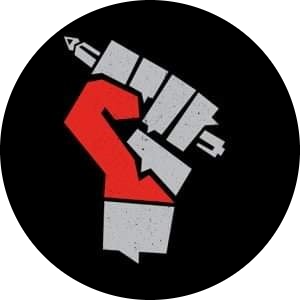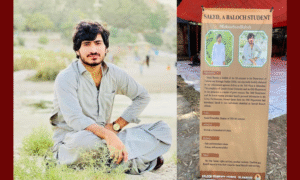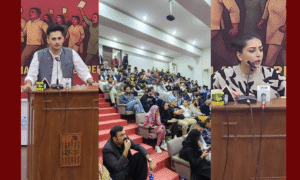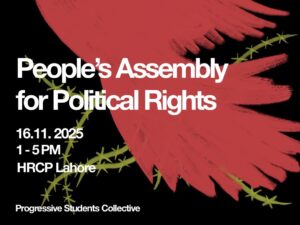‘Between The Great Divide’ amplifies the voices of oppressed people in a conflict zone that is not given a lot of attention in the media, especially in Pakistan. The book is arguably the first of its kind, as it explores the effects of the Kashmir conflict through the accounts of people on the Pakistani administered side of Kashmir, as opposed to solely focusing on the Indian side. The book was published in 2018 and is one of three books by Anam Zakria, most of which involve recording oral histories of narratives from conflict zones.
‘Between the Great Divide’ features interviews with people from different walks of life, people with very different political views and stakes in the conflict. The author dedicates a fair portion of the first section of the book to providing historical context. Through in-person interviews, the author walks us through the history of the region largely told by people from Kashmir. The book gets particularly interesting when we start hearing the stories of the thousands of Kashmiri refugees that have fled the violence on the Indian side. The accounts of families that have been torn apart, living on different sides of the Line Of Control, are very moving and also insightful. They are littered with references to political events, protests and offer us a look into the lived experiences of people facing the brunt of the multifaceted violence that has taken place over the years. A large part of the Kashmiri refugee experience seems to be that of disillusionment. The idea of “Azad” Kashmir under Pakistan proved for some to be a fantasy when they arrived and were denied basic civil rights. The book brings forth the previously very underrepresented perspective of Kashmiri women, who offer insight into the very gendered nature of the conflict. Women have been leading the indigenous call for peace in the region, often marching to Pakistani check-posts demanding that no border infiltrations take place near their localities, as these often invite trouble from the Indian side in the form of mortars and bullets. The accounts of these women among other things demonstrate how people are more concerned with the safety of their families and homes as well as the lack of opportunities to earn a decent living as opposed to speaking of the grand narratives and political idealism that the state often projects to the rest of the country. No one’s all that interested in the David versus Goliath / Pakistan versus India stuff . People on both sides seem to yearn for the same things; political freedom, better living standards, civil rights and security.
The parts of the book that I found most interesting were the sections that spoke about the Kashmiri nationalist movement in Pakistan. Those who advocate for the independence of Kashmir are constantly harassed and often violently repressed in ‘Azad’ Kashmir. Apparently, in Pakistan Administered Kashmir anyone who wishes to contest elections has to pledge allegiance to Pakistan, and formally declare that they have no desire for independence. It is interesting to note how this requirement imposed by the state does not go against Pakistan’s official position on the Kashmir issue; that the people of Kashmir will have the right to determine their future based on a plebiscite as either a part of India or Pakistan. Independence has never been on the table for the Kashmiris and only exists in rhetoric. The book offers insight into the political repression that Kashmiri nationalists face under what they term no less than an occupation of their land by Pakistani forces. Political groups such as the Jammu Kashmir Liberation Front (JKLF) and the Jammu Kashmir National Students Federation (JKNSF) are left-leaning nationalist groups that advocate for greater civil and political rights as well as the right to self-determination. These groups have made claims regarding the harassment of civilians at the hands of the Pakistan Military. Security forces have been accused by the nationalists of violent incidents such as abductions and assassinations, and even some incidents of sexual violence. The interviews of members of the JKLF and the JKNSF in Anam Zakria’s book help us gain an understanding of their political goals and demands. They advocate for economic reforms to help make the region’s local economy self-sustainable. They also claim that the region does not get its fair share of the electricity produced by its hydroelectric power stations. The crux of their stance is that Pakistan seems to treat ‘Azad’ Kashmir like a colony.
What I find very compelling about the book is that it demonstrates a very continuous recognition of how historical events and political developments are interlinked. The earthquake, for instance, that hit Kashmir in 2005, is mentioned within the context of the rise of religious militant groups in the region. The vacuum left by the civil and military establishment was quickly filled by these groups after the disaster had hit, thus considerably changing the political landscape of the region. According to the nationalists, the cause of liberating Kashmir through religious Jihad was exported to the region by the Pakistani state and is being used to counter nationalist forces to this day.
The methods used to conduct the research required to write the book are also interesting; the book is essentially an ethnography of various civilian interest groups, most of which are never mentioned in the mainstream media. Most claims made by those being interviewed are weighed against reported incidents of violence and are given a fair amount of context, allowing us to come to our own conclusions. The author doesn’t force a one-sided narrative and often points out evidence to support or question the information we get from the interviews. Her work is intersectional and also very thorough, as it deals with not only documenting narratives across ethnic, religious and gender lines but also incorporates historical and political events that are relevant to the developments in Kashmir.
I first learnt about the JKNSF while attending a left-wing political gathering at the National Press Club in Islamabad earlier this year. Despite having taken a keen interest in and participating in left-wing politics in Lahore for the past few years, I had never heard of these groups or their perspective – aside from that one occasion in Islamabad, . These voices are actively repressed by the state, and they do not have a very visible presence in the mainland, especially in Lahore. However, we can’t use that as an excuse to remain completely ignorant. Perhaps our lack of engagement and interest is a symptom of a larger failure; we aren’t doing enough to learn and tell others about life in the periphery. Maybe we should try to fill this void by holding more formal discussions and lectures or at least recommend and share resources about the politics and history of the periphery. If at some point in the near future we wish to participate in politics on a national level, it is important for activists, particularly students, to be aware of political histories and the current political dynamics of places far from home. I’m sure there are many student activists here in Lahore, especially those that come from different parts of the region that have a lot to share. We should play our part in encouraging them to do so and help them formally organize study circles or lectures that focus primarily on local histories and current political dynamics of specific regions as opposed to focusing on national histories and politics in the centre.
We as citizens of Pakistan have been taught a very simplified version of the Kashmir conflict, and often fall prey to misinformation about the state of political freedoms in Pakistan Administered Kashmir. Whenever we hear about the conflict in Kashmir, the people of Kashmir and their narrative is never considered. ‘Between The Great Divide’ is perhaps one of the only recent sources written by a Pakistani author on the political repression of the people living in Pakistan Administered Kashmir, which makes it an inherently valuable resource for anyone interested in learning about the region. The book does not contest the fact that the Indian Administered side has seen a more violent repression of those that desire independence. However, it does contest the view that everything on the Pakistani Administered side is ‘fine’, and does so with great sensitivity and sincerity.
This article has been contributed by Hamza Waqas. Hamza Waqas is an activist, journalist, and student of liberal arts at Beaconhouse National University. He is interested in issues of public policy, urban planning and politics. He also has a keen interest in horticulture and sustainable farming. He is also the Culture Desk Head at the Students Herald.
The Students’ Herald News Desk focuses on reporting the latest news regarding student politics and campus updates to you.
The News Desk can be reached at admin@thestudentsherald.com




